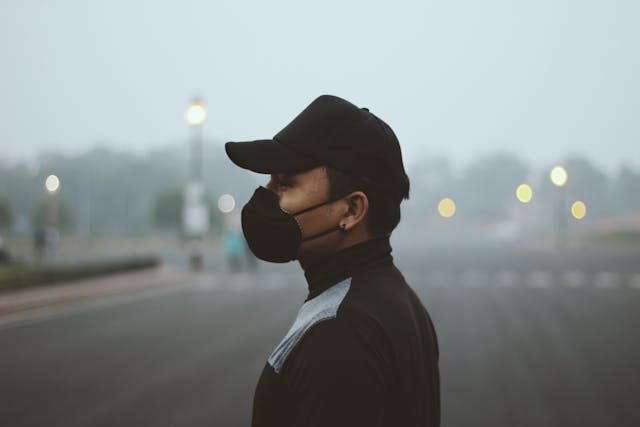Air quality in India’s capital hits hazardous levels, leading to flight delays, school closures, and construction bans
In response to the severe air pollution engulfing the city, New Delhi has introduced stricter anti-pollution measures aimed at combating the worsening smog that has disrupted daily life, including flights and visibility of iconic landmarks such as the Taj Mahal.
On November 14, 2024, the Indian government took immediate action, imposing a ban on non-essential construction in the capital, the world’s most polluted city. The Chief Minister of Delhi, Atishi, has also ordered primary schools to transition to online classes to reduce students’ exposure to the hazardous air quality.
According to the Swiss-based IQAir, Delhi’s air quality index was recorded at 424, a figure deemed “hazardous” and the worst among global capitals. This level of pollution has been exacerbated by a toxic mix of smoke, fog, and dust, which has led to severe disruptions, including the temporary obscuring of the Taj Mahal in Agra, located about 220 kilometers from Delhi. The famous Golden Temple in Amritsar also saw its visibility reduced by the same toxic haze.
Embed from Getty ImagesAuthorities have implemented several measures to mitigate the situation. From Friday morning, these will include sprinkling water mixed with dust suppressants on roads, along with mechanized sweeping to settle the dust. Residents are also urged to avoid burning coal or wood for heating, which further contributes to the pollution. Additionally, the government has appealed to the public to make greater use of public transport.
The government’s actions come as the air quality in northern India has worsened significantly over the past week, with smog enveloping the region. Stubble burning—the practice of burning leftover crop residue—has contributed to about 38% of the pollution in the capital. This is especially prevalent in neighboring states of Punjab and Haryana, where farmers continue to burn large quantities of rice stubble, creating hazardous conditions.
The pollution crisis has severely impacted air travel as well. Flight delays have been widespread, with data from Flightradar24 showing that as of Thursday afternoon, 88% of departures and 54% of arrivals were delayed due to the poor visibility and hazardous air quality.
The air quality in New Delhi is expected to remain dangerously high for the foreseeable future, with local authorities pledging to continue implementing additional measures aimed at protecting public health and alleviating the widespread pollution.
